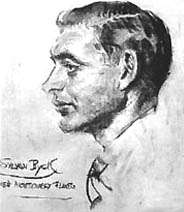King Features Syndicate
 | |
| Subsidiary | |
| Industry | Print syndication |
| Founded | 1914 |
| Founder | William Randolph Hearst |
| Headquarters | New York City, New York, U.S. |
| Products | Comic strips, newspaper columns, editorial cartoons |
| Owner | Hearst Communications |
| Subsidiaries |
North America Syndicate Cowles Syndicate |
| Website |
kingfeatures |
King Features Syndicate, Inc. is a print syndication company owned by Hearst Communications that distributes about 150 comic strips, newspaper columns, editorial cartoons, puzzles, and games to nearly 5,000 newspapers worldwide. King Features Syndicate is a unit of Hearst Holdings, Inc., which combines the Hearst Corporation's cable-network partnerships, television programming and distribution activities, and syndication companies. King Features' affiliate syndicates are North America Syndicate and Cowles Syndicate. Each week, Reed Brennan Media Associates, a unit of Hearst, edits and distributes more than 200 features for King Features.[1]
History

William Randolph Hearst's newspapers began syndicating material in 1895 after receiving requests from other newspapers. In 1914, Hearst and his manager Moses Koenigsberg consolidated all of Hearst's syndication enterprises under one banner. Koenigsberg gave it his own name (the German word König means king) when he launched King Features Syndicate. Production escalated in 1916 with King Features buying and selling its own staff-created feature material. A trade publication — Circulation — was published by King Features between 1916 and 1933. Syndication peaked in the mid-1930s with 130 syndicates offering 1,600 features to more than 13,700 newspapers.[2]
In 1986, King Features acquired the Register and Tribune Syndicate for $4.3 million.[3] Later that year, Hearst bought News America Syndicate (formerly Publishers-Hall).[4][5] By this point, with both King Features and News America (renamed North America Syndicate), Hearst led all syndication services with 316 features.[6]
In 2007, King Features donated its collection of comic-strip proof sheets (two sets of over 60 years' accumulation) to the Billy Ireland Cartoon Library & Museum and the Michigan State University Comic Art Collection while retaining the collection in electronic form for reference purposes.[7]
William Randolph Hearst's involvement
In 1941, King Features manager Moses Koenigsberg wrote an autobiographical history of the company entitled King News. William Randolph Hearst paid close attention to the comic strips, even in the last years of his life, as is evident in these 1945–46 correspondence excerpts, originally in Editor & Publisher (December 1946), about the creation of Dick's Adventures in Dreamland — a strip that made its debut on Sunday, January 12, 1947; written by former Daily News reporter Max Trell and illustrated by Neil O'Keefe (who also drew for King Features a strip based on Edgar Wallace's Inspector Wade of Scotland Yard):[8]
- Hearst to King Features president J. D. Gortatowsky (December 28, 1945): "I have had numerous suggestions for incorporating some American history of a vivid kind in the adventure strips of the comic section. The difficulty is to find something that will sufficiently interest the kids… Perhaps a title — "Trained by Fate" — would be general enough. Take Paul Revere and show him as a boy making as much of his boyhood life as possible, and culminate, of course, with his ride. Take Betsy Ross for a heroine, or Barbara Fritchie… for the girls."
- King Features editor Ward Greene to Hearst: "There is another way to do it, which is somewhat fantastic, but which I submit for your consideration. That is to devise a new comic… a dream idea revolving around a boy we might call Dick. Dick, or his equivalent, would go in his dream with Mad Anthony Wayne at the storming of Stony Point or with Decatur at Tripoli… [This would] provide a constant character… who would become known to the kids."
- Hearst to Greene: "The dream idea for the American history series is splendid. It gives continuity and personal interest, and you can make more than one page of each series… You are right about the importance of the artist."
- Greene to Hearst (enclosing samples): "We employed the dream device, building the comic around a small boy."
- Hearst: "I think the drawing of Dick and His Dad is amazingly good. It is perfectly splendid. I am afraid, however, that similar beginning and conclusion of each page might give a deadly sameness to the series… Perhaps we could get the dream idea over by having only the conclusion on each page. I mean, do not show the boy going to sleep every time and then show him waking up, but let the waking up come as a termination to each page… Can you develop anything out of the idea of having Dick the son of the keeper of the Liberty Statue in New York Harbor? I do not suggest this, as it would probably add further complications, but it might give a spiritual tie to all the dreams. The main thing, however, is to get more realism."
- Greene: "We do not have to show the dream at the beginning and end of every page… If we simply call the comic something like Dreamer Dick, we would have more freedom… Some device other than the dream might be used… A simple method would be to have him curl up with a history book."
- Hearst: "If we find [the first series] is not a success, of course we can brief it, but if it is a success it should be a long series."
- Greene: "I am sending you two sample pages of Dick's Adventures in Dreamland which start a series about Christopher Columbus."
- Hearst: "In January, I am told, we are going to 16 pages regularly on Puck, the Comic Weekly. That would be a good time to introduce the Columbus series, don't you think so?"
The last strips Hearst personally selected for syndication were Elliot Caplin & John Cullen Murphy's Big Ben Bolt and Mort Walker's Beetle Bailey;[9] Hearst died in 1951.
Editors

In the 1940s, Ward Greene (1893–1956) was King Features' editor, having worked his way up through the ranks. He was a reporter and war correspondent for the Atlanta Journal for four years (1913–17), moving to the New-York Tribune in 1917 and then the New York Journal as correspondent in France and Germany (1918–19). He joined King Features in 1921, became a writer and editor of the magazine section in 1925, advancing to executive editor and general manager. Vice president Bradley Kelly (1894-1969) was a comics editor during the 1940s.
Sylvan Byck (1904–1982) was head editor of the syndicate's comics features for several decades, from the 1950s until his retirement in 1978. A King Features employee for more than 40 years and comics editor for 33 years, Byck was 78 when he died July 8, 1982. Comic-strip artist John Celardo (1918–2012) began as a King comics editor in 1973.
In 1973, Tom Pritchard (1928–1992) joined King Features, and became executive editor in 1990, overseeing daily editorial operations and the development of political cartoons, syndicated columns, and editorial services for King Features and North America Syndicate. Born in Bronxville, New York, Pritchard arrived at King Features after work as a reporter at The Record-Journal (Meriden, Connecticut), as feature writer with The Hartford Times, as editor-publisher of Connecticut's weekly Wethersfield Post, and as executive editor of The Manchester Journal Inquirer in Connecticut. He died of a heart attack in December 1992 at his home in Norwalk.[10]


In 1978, cartoonist Bill Yates (1921–2001) took over as King Features' comics editor. He had previously edited Dell Publishing's cartoon magazines (1000 Jokes, Ballyhoo, For Laughing Out Loud) and Dell's paperback cartoon collections. Yates resigned from King Features at the end of 1988 to spend full-time on his cartooning, and he died March 26, 2001.
In 1988, Yates was replaced by Jay Kennedy — author of The Official Underground & Newave Comix Price Guide (Norton Boatner, 1982). Kennedy was King Features' lead editor until March 15, 2007, when he drowned in a riptide while vacationing in Costa Rica.[11]
Brendan Burford, who attended the School of Visual Arts, was employed for a year as an editorial assistant at DC Comics before joining King Features as an editorial assistant in January 2000. Working closely with Jay Kennedy over a seven-year span, he was promoted to associate editor and then, after Kennedy's death, to the position of comics editor on April 23, 2007.
Comics editors
- 1940s Bradley Kelly
- 1950s–1978 Sylvan Byck
- 1978–1988 Bill Yates
- 1988–2007 Jay Kennedy
- 2007–present Brendan Burford
Strip submissions
When asked to speak in public, Byck made a point of telling audiences that King Features received more than 1,000 strip proposals annually, but chose only one each year. However, in Syd Hoff's The Art of Cartooning (Stravon, 1973), Byck offered some tips regarding strip submissions, including the creation of central characters with warmth and charm and the avoidance of "themes that are too confining," as he explained:
- Although characterization is the most important element of a comic, the cartoonist also must cope with the problem of choosing a theme for his new strip. What will it be about? Actually, it is possible to do a successful comic strip about almost anything or anybody if the writing and drawing are exactly right for the chosen subject. In general, though, it is best to stay away from themes that are too confining. If you achieve your goal of syndication, you want your strip to last a long time. You don't want to run out of ideas after a few weeks or months. In humor strips, it is better to build around a character than around a job. For example, it is possible to do some very funny comic strip gags about a taxi driver. But a strip that is limited to taxi driver gags is bound to wear thin pretty fast. I'd rather see a strip about a warmly funny man who just happens to earn his living as a cabbie and whose job is only a minor facet of his potential for inspiring gags. Narrative strips can be and often are based on the central character's job. For example, the basis of a private eye strip is the work he does. But even here the strip will only be as successful as the characterization in it. The big question is: what kind of a man is this particular private eye?[12]
Animation, comic books, and licensing
Many King characters were adapted to animation, both theatrical and television cartoons.[13] Strips from King Features were often reprinted by comic book publishers. In 1967, King Features made an effort to publish comic books of its own by establishing King Comics. This short-lived comic-book line showcased King's best-known characters in seven titles:
The comics imprint existed for a year-and-a-half, with titles cover-dated from August 1966 to December 1967. When it ended, the books were picked up and continued by Gold Key Comics, Harvey Comics, and Charlton Comics.
In addition to extensive merchandising and licensing of such iconic characters as Betty Boop, Felix the Cat, and Popeye, King Features has diversified to handle popular animation and TV characters (from "Kukla, Fran and Ollie" and "Howdy Doody" to "Mr. Bill" and "Mr. Magoo"), plus publicly displayed, life-sized art sculptures — "CowParade", "Guitarmania" and "The Trail of the Painted Ponies." King Features also represents David and Goliath, an apparel and accessories line popular with teenagers.
As a sales tool, the King Features design team created colorful strip sample folders resembling movie press kits. With rising paper costs and the downsizing of newspapers, the comic-strip arena became increasingly competitive, and by 2002, King salespeople were making in-person pitches to 1,550 daily newspapers across America. King was then receiving more than 6,000 strip submissions each year, yet it accepted only two or three annually. Interviewed in 2002 by Catherine Donaldson-Evans of Fox News, Kennedy commented:
- It is difficult for cartoonists to break into syndication, but contrary to popular understanding, there's more new product being pitched now than 30 years ago. In that regard, there are more opportunities for new cartoonists. There's a finite amount of space to run comic strips—less now than 50 years ago. There are fewer two-paper cities and a lot of papers have shrunk their page size. New strips can succeed. The new cartoonists just have to be that much better.[14]
Digital plaforms
King's DailyINK online
Confronted by newspaper cutbacks, King Features has explored new venues, such as placing comic strips on mobile phones. In 2006, it launched DailyINK. On a web page and via email, the DailyINK service made available more than 90 vintage and current comic strips, puzzles, and editorial cartoons.[15] The vintage strips included Bringing Up Father, Buz Sawyer, Flash Gordon, Krazy Kat, The Little King, The Phantom, and Rip Kirby. Jay Kennedy introduced the service early in 2006, commenting:
- Comics are consistently ranked among the most popular sections by newspaper readers. However, because of space, newspapers are not able to offer as vast a selection as many readers would like, and therefore millions of comic lovers are often not exposed to some of the most creative strips. In creating DailyINK, we wanted to ensure that fans had a destination where they could experience our complete line-up of award-winning comic artists and writers. DailyINK really sets the standard for comics online. By offering all of our current favorites updated daily, along with access to our archives of beloved characters as well as political humor and games, we have designed DailyINK.com as a destination fans will want to visit every day for something new.
With 11,000 subscribers by June 2010, more vintage strips were added to DailyINK, including Barney Google, Beetle Bailey, Big Ben Bolt, Brick Bradford, The Heart of Juliet Jones, Jackys Diary, The Katzenjammer Kids, Little Iodine, Mandrake the Magician, Office Hours, Quincy and Radio Patrol. On November 15, 2010, a subscription rate increase to $19.99 was announced, effective December 15, 2010, with applications available on iPhone, iPad, and iPod Touch, plus a "new and improved" DailyINK in 2011. The redesign was by Blenderbox.[16] Added features included original publication dates, a forum, and a blog, mostly promotional, but also with "Ask the Archivist" posts exploring comic-strip history. The "Last 7" feature enables the reader to see a week's worth of comics on one page.
On January 13, 2012, the DailyINK app was voted as the People's Champ in the Funny category in the 2011 Pixel Awards. Established in 2006, the Pixel Awards honor sites and apps displaying excellence in web design and development. Other nominees in the Funny category: JibJab Media Inc, Threaded, Snowball of Duty:White Opps and SoBe Staring Contest.[17]
In 2012, Jackys Diary was dropped from DailyINK, and the Archivist explained: "Unfortunately, we no longer have the rights to publish the strip."[18]
In December 2013, Daily INK was relaunched as a new website called Comics Kingdom.[19][20]
Comics Kingdom
In November 2008, King Features introduced Comics Kingdom, a digital platform that newspapers can embed on their sites. Comics Kingdom splits advertising revenue with newspapers carrying the feature; those papers make local sales, while King handles national sales. During the 30-day period in which strips are made available on the newspaper sites, readers could post comments on local community forums.[21]
Today, Comics Kingdom (comicskingdom.com) features comic strips and editorial cartoons which can be accessed and read online. This website also features some interactive puzzles. Comics are updated every single day, plus a one-year archive is available to be viewed for free. Older comics can be accessed by being a Comics Kingdom Royal (a paid member, subscribed to their premium subscription service). Subscribers to Comics Kingdom Royal also get to keep a scrapbook of your favorite cartoons, get daily email updates, and access a huge selection of classic vintage comics. Comics Kingdom also features over 30 of comic strips in Spanish.[22][23]
A la Carte Online Comics
King's A la Carte Online Comics offers syndication of specific strips aimed at "precisely defined audiences" of specialized websites. These are available in such categories as Animals, Environmental, Military, and Technology.[24]
King Features Weekly Planet
King Features Weekly Planet was created as an online newspaper of King's columns, comics, and puzzles.[25]
King Features strips and panels
- Abie the Agent
- The Amazing Spider-Man
- Apartment 3-G
- Arctic Circle
- Baby Blues
- Barney Google and Snuffy Smith
- Beetle Bailey
- Better Half, The
- Betty Boop
- Betty Boop and Felix
- Between Friends
- Big Ben Bolt
- Bizarro
- Bleeker: The Rechargeable Dog
- Blondie
- Boner's Ark
- Brick Bradford
- Brilliant Mind of Edison Lee, The
- Bringing Up Father
- Buckles
- Buz Sawyer
- Crankshaft
- Crock
- Curtis
- Daddy Daze
- Deflocked
- Dennis the Menace
- Donald Duck
- Dustin
- Edge City
- The Family Circus
- Felix the Cat
- Flapper Filosofy
- Flash Gordon
- Franklin Fibbs
- Funky Winkerbean
- Gil
- Glamor Girls
- Grin and Bear It (ended May 2015[26])
- Hägar the Horrible
- Happy Hooligan
- Hazel
- Henry
- Hi and Lois
- Hocus-Focus
- Hubert [27]
- Intelligent Life
- Johnny Hazard
- José Carioca
- Judge Parker
- Jungle Jim
- Junior Whirl
- The Katzenjammer Kids
- Kevin and Kell
- King of the Royal Mounted
- Krazy Kat
- Laff-a-Day
- Little Annie Rooney
- Little Audrey
- Little Iodine
- Little King, The
- Lockhorns, The
- Mallard Fillmore
- Mandrake the Magician
- Mark Trail
- Marvin
- Mary Worth
- Mickey Mouse
- Moose & Molly
- Mother Goose and Grimm
- Mutts
- My Cage
- Norb
- Norm, The
- Oh, Brother!
- Ollie and Quentin (reruns began January 9, 2012)
- On the Fastrack
- Ozark Ike
- Pajama Diaries, The
- Pardon My Planet
- Pete the Tramp
- Phantom, The
- Piranha Club
- Popeye
- Prince Valiant
- Radio Patrol
- Red Barry
- Redeye
- Retail
- Rex Morgan, M.D.
- Rhymes with Orange
- Rip Kirby
- Ripley's Believe It or Not!
- Rusty Riley
- Safe Havens
- Sally Forth
- Sam and Silo
- Sherman's Lagoon
- Six Chix
- Slylock Fox & Comics for Kids
- Steve Roper and Mike Nomad
- Take it from the Tinkersons
- Teena
- They'll Do It Every Time
- Tiger
- Tina's Groove
- Todd the Dinosaur
- Triple Take
- Trudy
- Tundra
- Tumbleweeds
- Zippy the Pinhead
- Zits
Editorial cartoonists
- Jim Borgman
- Ed Gamble
- Alex Hallatt
- Jeff Koterba
- Jimmy Margulies
- Jim Morin
- Mike Peters
- Mike Shelton
- Mike Smith
Columnists
Commentary
- Stanley Crouch
- Amy Goodman, "Breaking the Sound Barrier"
- David Hackworth, "Defending America"
- Roger Hernandez
- Rich Lowry
- Marianne Means
- Dan Rather
- Charley Reese
- Maria Elena Salinas
- Mark Vasto, "A Sporting View"
Lifestyle and advice
- Dana Block and Cindy Elavsky, "Daytime Dial"
- John Bonne et al., "The Wine Chronicle"
- Helen Bottel, "Helen Help Us!"
- Tad Burness, "Auto Album"
- Jack Canfield and Mark Victor Hansen, "Chicken Soup for the Soul"
- Al and Kelly Carell, "Super Handyman"
- Harlan Cohen, "Help Me, Harlan!"
- Vicki Farmer Ellis, "Sew Simple"
- Arthur Frommer, "Arthur Frommer's Travel Column"
- Peggy Gisler and Marge Eberts, "Dear Teacher"
- Heloise, "Hints from Heloise"
- Ken Hoffman, "The Drive-Thru Gourmet"
- Rheta Grimsley Johnson
- Jeanne Jones, "Cook It Light"
- Ralph and Terry Kovel, "Kovels: Antiques and Collecting"
- Tom and Ray Magliozzi from Car Talk, "Click and Clack Talk Cars"
- Tom McMahon, "Kid Tips: Practical Solutions for Everyday Parenting"
- Seventeen, "Dear Seventeen"
- Debbie Travis, "House to Home"
- Barbara Wallraff from Atlantic Monthly, "Word Court"
- Allan Wernick, "Immigration and Citizenship"
- Terry Stickels, "Wit and Wisdom", "Stickelers" column
- Phil Erwin, "The Card Corner"
- Eric Tyson, "Investors' Guide
Affiliated syndicates
- Torstar Syndication Services (King's distribution partner in Canada)
See also
References
- ↑ Reed Brennan Media Associates
- ↑ Harvey, Robert C. The Art of the Funnies: An Aesthetic History. University Press of Mississippi, 1994.
- ↑ Strentz, Herb. "John Cowles"
- ↑ Charles Storch. "Hearst To Buy Murdoch Syndicate". Chicago Tribune.
- ↑ King Features Syndicate profile. Archived 2006-10-29 at the Wayback Machine. via Hearst Corporation
- ↑ Katina Alexander (June 14, 1987). "A Superhero For Cartoonists?". The New York Times. The New York Times Company. p. 34. Retrieved August 18, 2012.
- ↑ Randy Scott. "The King Features Proof Sheet Collection." Insight. [Fall 2009?] p.3
- ↑ Dick's Adventures in Dreamland Archived 2015-03-24 at WebCite at Don Markstein's Toonopedia. Archived from the original on March 24, 2015.
- ↑ Warren, James. "A grand tribute to a golden era of cartoons," Poynter (JANUARY 2, 2018).
- ↑ "Tom Pritchard; Editor, 64", The New York Times, December 9, 1992.
- ↑ Heller, Steven. "Jay Kennedy, 50, an Editor and Scholar of Comic Strips, Is Dead," New York Times (MARCH 19, 2007).
- ↑ Hoff, Syd. The Art of Cartooning. Stravon, 1973.
- ↑ Mackey, Dave. King Features Syndicate TV Cartoons: A Complete Filmographic Guide
- ↑ Donaldson-Evans, Catherine. "Taking Comics Back to the Drawing Board", Fox News, May 7, 2002.
- ↑ DailyINK
- ↑ Blenderbox Archived 2012-03-23 at the Wayback Machine.
- ↑ 2011 Pixel Awards Archived 2012-07-11 at the Wayback Machine.
- ↑ "Ask the Archivist", DailyINK, May 9, 2012. Archived June 14, 2012, at the Wayback Machine.
- ↑ "Welcome to Comics Kingdom! - December 09, 2013 18:09". Comics Kingdom. Retrieved 2018-06-25.
- ↑ "Questions and Answers About Our New Site - December 10, 2013 09:35". Comics Kingdom. Retrieved 2018-06-25.
- ↑ Lieberman, David. "King Features mixes cash with laughs in Comics Kingdom," USA Today, November 18, 2008.
- ↑ "About | Comics Kingdom". Comics Kingdom. Retrieved 2018-06-25.
- ↑ "ComicsKingdom.com". King Features Syndicate. 2013-12-10. Retrieved 2018-06-25.
- ↑ King Features: A la Carte Comics
- ↑ King Features Weekly Planet
- ↑ Awtry, Josh (April 24, 2015). "Street musicians deserve our support". Asheville Citizen-Times. Gannett Company. Retrieved May 15, 2015.
- ↑ Hubert Archived 2015-07-12 at WebCite at Don Markstein's Toonopedia. Archived from the original on July 12, 2015